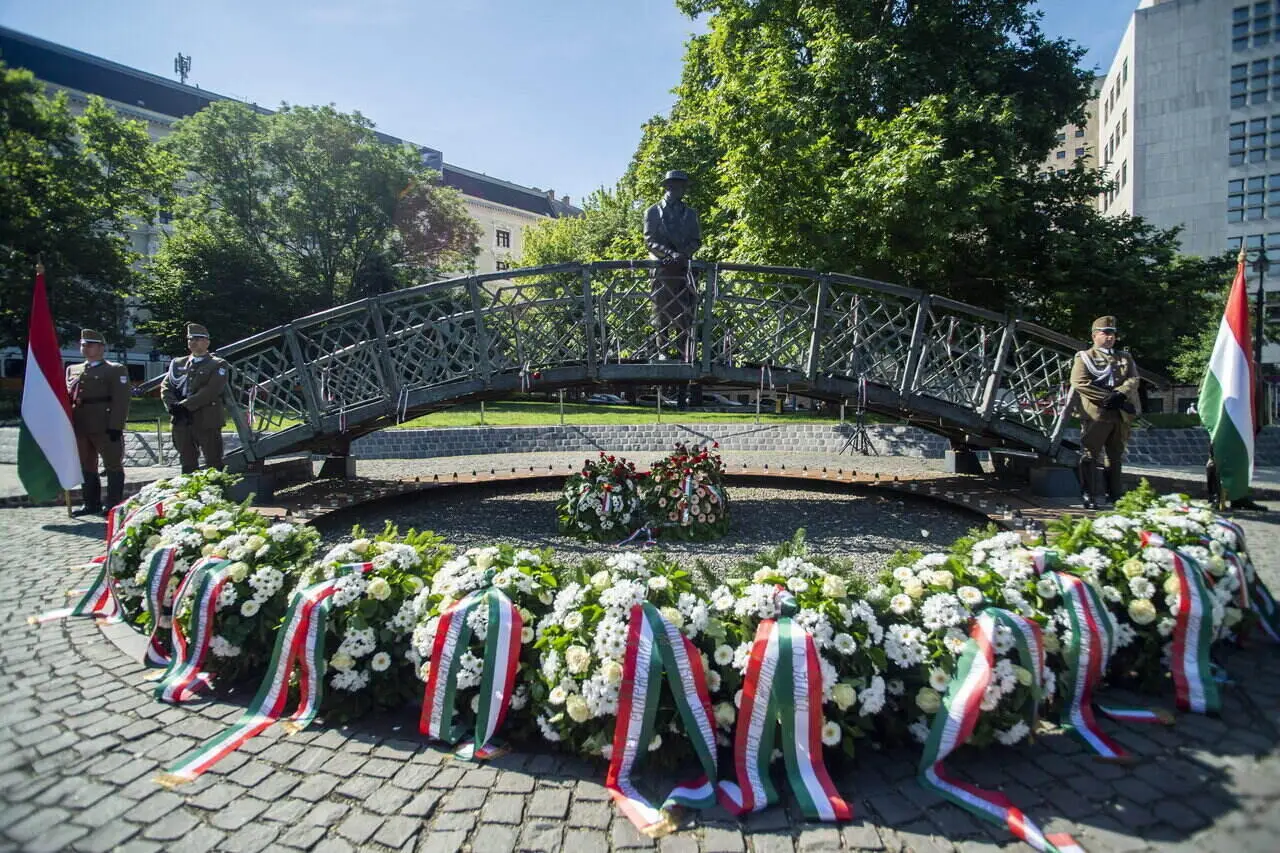Government: brave, patient and wise politicians can bring about peace

The day of the reburial of Imre Nagy, the martyred prime minister of Hungary’s 1956 anti-Soviet uprising and freedom fight, was when Hungarian political life was able to begin anew, a state secretary of the ministry of culture and innovations told a commemoration event on Thursday.
Marking the 33rd anniversary of Nagy’s reburial at the late prime minister’s statue in Budapest, Eszter Vitályos said the anniversary was about paying tribute to the ideas of courage, patience and wisdom.
She said the revolution of 1956 represented courage, the period between November 4, 1956, the defeat of the revolution, and June 16, 1989, the day of Nagy’s reburial, symbolised patience, while June of 1989 had called for wisdom.
Addressing Hungarians within and beyond the country’s borders, Vitályos said the threats facing Hungary were no smaller today than in the past, only different. But those who are brave, patient and wise enough can bring about peace, she said.
Former President Áder pays tribute to 1956 martyrs
János Áder, Hungary’s former president, on Thursday marked the anniversary of the reburial of the martyrs of the 1956 anti-Soviet revolution. Addressing a commemoration held at Plot 301 in Budapest’s New Public Cemetery, Áder said the martyrs of 1956 had not been given proper burials until decades after they had been executed. The reburial of the martyrs in 1989 was worthy of the freedom fighters, the Hungarian nation and truth, the former president said, adding that June 16, 1989, the day of the reburials, had been “a day of hope”.
“It is this hope that we can experience when we don’t allow others to decide our fate,” Ader said. “When we make sure that remembrance is dignified, when we keep the graves in good condition . we do so for freedom.” Áder said the martyrs of the revolution had originally been buried “barbarically in unmarked graves, humiliated even in death”.
He said that for 33 years now, plots 301, 300 and 298 in the New Public Cemetery had been symbols and not just numbers.
Áder also said that for 33 years Hungarians had incorrectly been referring to June 16, 1989 as the day of the “reburial” of the 1956 martyrs, arguing that what the communist dictatorship had done to the Hungarian martyrs could not be considered a burial.
And in the summer of 1989, the demands of the families of the martyrs were “stronger than the government that was lying even to itself”, Áder said, noting that
the communist leadership had been forced to “look into its own crimes and the unmarked graves”.
In 1989 Hungarians got to see that unity was stronger than division, fallen heroes stronger than “living criminals”, and that freedom was stronger than dictatorship, Ader said.
Source: MTI




If we believe our Politicians, we are under incessant attack … Liberal Elites, Soros Lapdogs, EU Bureaucrats, pro-migration forces, gay propaganda … And only our brave Politicians can save us !